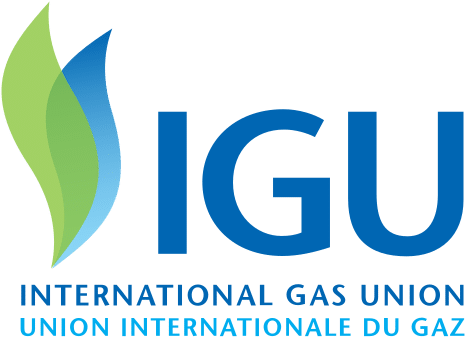Good Morning,
I would like to start by thanking you all for joining us for this timely release of the IGU’s 13th Annual World LNG Report.
I especially would like to recognize the hard work of the IGU LNG Committee and the report study group members, as well as our colleagues from GIIGNL and S&P Global Commodity Insights, and of course, our knowledge partner on the report, Rystad Energy. Their efforts made the report possible in this extraordinary year.
This year’s report has been keenly anticipated, because of the impact that the events in Eastern Europe are having on commodity and energy markets.
It comes out at a time when LNG is more vital than ever to the secure and reliable functioning of energy systems around the world. It is also a vital tool for controlling emissions, particularly as the crisis in energy supply is forcing even the most climate-responsible economies to turn back to coal, wiping out emissions reductions achieved in recent years.
The worst global energy crisis in memory is unfolding in the context of a fragile recovery from the global pandemic and compounding impacts of broader commodity, inflation, and food supply crises. All while the planet is warming and the need to reverse growing emissions trends is urgent.
This perfect storm of global scale challenges is making it increasingly difficult for the world to remain focused on the energy transition to avert dangerous climate change impacts.
Despite the understandable need to deal with the calamity at hand, the world must stay the course of energy transition, and natural gas, together with a growing portfolio of decarbonised, low and zero carbon gases, will be key to making that possible.
Gas is the fastest, available, flexible, efficient, and sustainable long-term vehicle to get the world back onto the energy transition path, and as you will see in the report and hear in today’s presentation, the inherent flexibility of LNG allows it to be delivered to almost anywhere in the world.
As this report reminds us, LNG connects 40 importing with 19 exporting markets, with global liquefaction capacity reaching another annual high in 2021.
The report also shows the great potential for LNG in Africa, and that continent’s necessary economic development. Africa alone has over 120 MTPA of proposed liquefaction – a quarter of last year’s world capacity – waiting for final investment decision. If that capacity materialized, Africa and its people could see great societal and economic benefits.
The current energy crisis in the developed world where the wealthy economies are worried about maintaining secure and reliable access to energy to cook meals and heat homes for their families, is the only reality that millions of Africans have known to date.
As the International Energy Agency noted in their recent Africa report, the entire continent, where 20% of the world’s population lives, is responsible for just 3% of today’s global energy emissions. Gas development for domestic use and for export could bring the development benefits Africa needs.
The presentation today will touch on the price trends. We are all too aware of the price rally that started after a rapid post-COVID-19 demand recovery and worsened as the Russia-Ukraine conflict added more stress to the already fully subscribed market.
Addressing supply constraints is going to be critical to energy security and economic stability in the world.
This is a great opportunity to reach complementary goals of enhancing global energy security by developing new sources, and support development goals. But this requires, long-term thinking and planning beyond the immediate issue. Energy security must remain a priority and it must be a key feature in the planning of the energy transition, for the world to avert future crises where it can.
The global gas industry welcomes the opportunity to demonstrate how it can maximise gas benefits in the sustainable, secure, affordable, and reliable energy systems of the future.
IGU stresses the long-term value of gas because LNG today, and progressively decarbonised, low and zero- carbon gases, will continue to deliver secure, reliable, and safe energy to all corners of the world – now and in the future.
Gas is itself a major decarbonisation vehicle, and the only hydrocarbon that can be decarbonised at scale, while continuing to provide flexibility and reliability to energy consumers and feedstock to vital industrial sectors. Gas and renewables will be the two major pillars of decarbonisation.
The IGU will continue to stress that clarity of policy and direction from governments is imperative to provide consistent signals to the industry and financing community to guide industry investment decisions.
LNG plays a critical role in assuring the fundamentals of global energy security, economic stability, and the energy transition, and this role has never been greater.
As the world considers its options for navigating through these unprecedented times, policymakers should consider the options that are available and the time that is required to bring new supply online, and we sincerely hope that this report will contribute to their understanding of the opportunities inherent in LNG.
Thanks again to all joining us today, and I very much look forward to this presentation of the IGU 2022 World LNG report.

